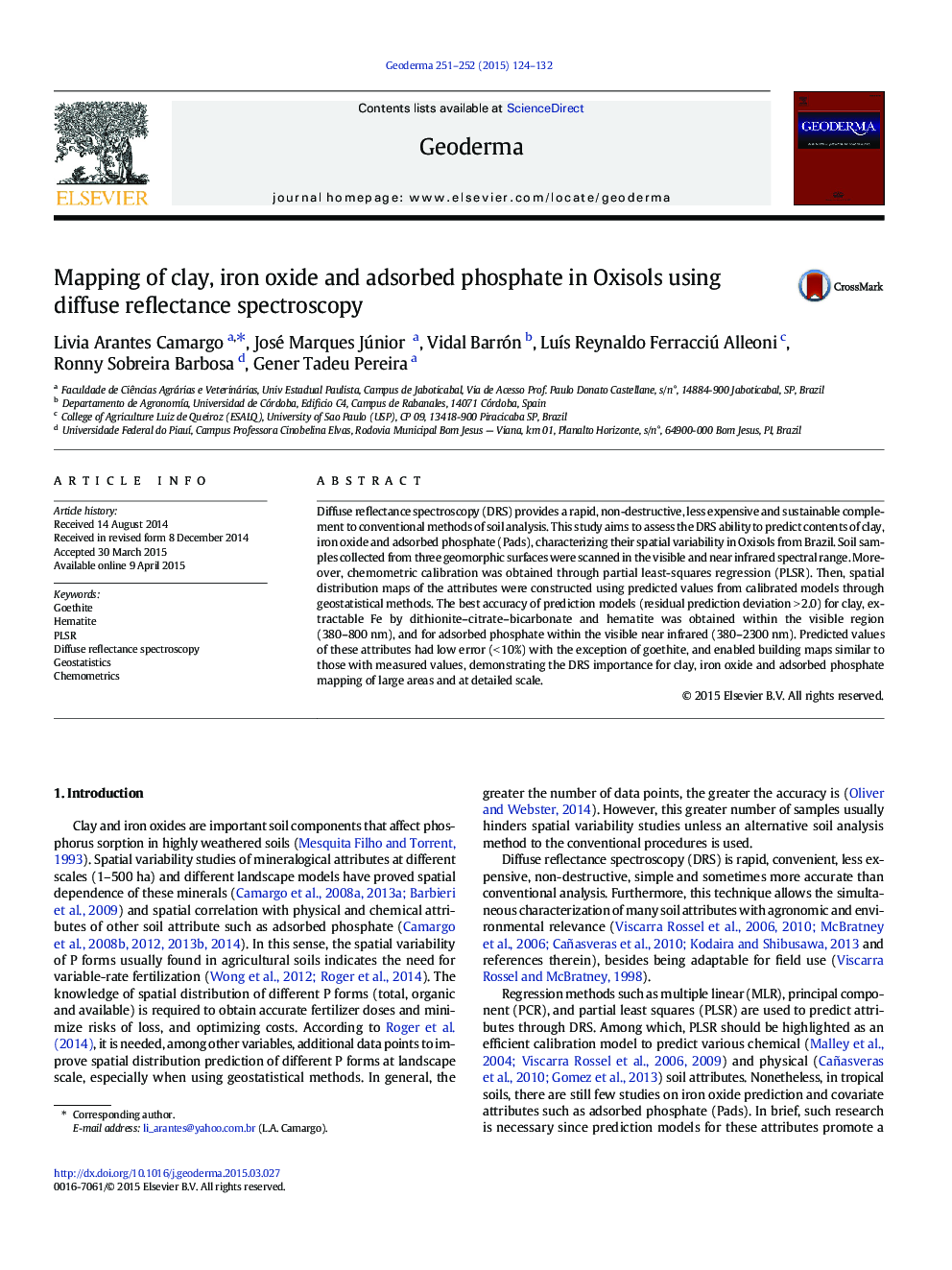| Article ID | Journal | Published Year | Pages | File Type |
|---|---|---|---|---|
| 6408560 | Geoderma | 2015 | 9 Pages |
â¢Clay, iron oxide and adsorbed phosphate were predicted by DRS using chemometrics.â¢Prediction for clay, Fed and Hm was obtained in VIS, and for Pads in VIS + NIR.â¢Predicted values allowed characterizing spatial variability of all attributes.â¢Results show that DRS is important for mapping of large areas in detailed scale.
Diffuse reflectance spectroscopy (DRS) provides a rapid, non-destructive, less expensive and sustainable complement to conventional methods of soil analysis. This study aims to assess the DRS ability to predict contents of clay, iron oxide and adsorbed phosphate (Pads), characterizing their spatial variability in Oxisols from Brazil. Soil samples collected from three geomorphic surfaces were scanned in the visible and near infrared spectral range. Moreover, chemometric calibration was obtained through partial least-squares regression (PLSR). Then, spatial distribution maps of the attributes were constructed using predicted values from calibrated models through geostatistical methods. The best accuracy of prediction models (residual prediction deviation >Â 2.0) for clay, extractable Fe by dithionite-citrate-bicarbonate and hematite was obtained within the visible region (380-800Â nm), and for adsorbed phosphate within the visible near infrared (380-2300Â nm). Predicted values of these attributes had low error (<Â 10%) with the exception of goethite, and enabled building maps similar to those with measured values, demonstrating the DRS importance for clay, iron oxide and adsorbed phosphate mapping of large areas and at detailed scale.
